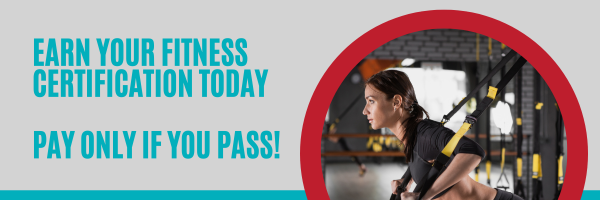High-intensity bodyweight workouts have become increasingly popular as an efficient and effective way to improve overall fitness, build strength, and burn calories. These workouts require little to no equipment, making them an excellent option for those with limited access to a gym or who prefer to exercise at home. In this blog post, we'll provide a comprehensive guide to high-intensity bodyweight workouts, including the benefits, essential exercises, and sample workouts, as recommended by the American Sports and Fitness Association (ASFA).
Benefits of High-Intensity Bodyweight Workouts
According to the American Sports and Fitness Association (ASFA), high-intensity bodyweight workouts offer several advantages, including:
- Improved Cardiovascular Fitness: The high-intensity nature of these workouts can help increase your heart rate, improving cardiovascular fitness and endurance.
- Increased Calorie Burn: High-intensity workouts burn more calories in a shorter amount of time compared to moderate-intensity exercises.
- Enhanced Muscle Strength and Endurance: Bodyweight exercises effectively target and strengthen various muscle groups, improving overall strength and endurance.
- Greater Flexibility: Many bodyweight exercises involve dynamic movements that can help improve flexibility and range of motion.
- Minimal Equipment Required: High-intensity bodyweight workouts can be performed with little to no equipment, making them accessible and convenient.
- Time-Efficient: Due to their intensity, these workouts can be shorter in duration, making them an excellent option for those with limited time.
- Easily Modifiable: Bodyweight exercises can be easily modified to accommodate different fitness levels and goals.
- Improved Body Composition: Regularly performing high-intensity bodyweight workouts can help reduce body fat and increase lean muscle mass.
- Better Balance and Coordination: Many bodyweight exercises challenge your balance and coordination, leading to improved overall functional fitness.
- Greater Workout Variety: The wide range of bodyweight exercises available allows for greater variety in your workout routine, helping to prevent boredom and plateaus.
Essential High-Intensity Bodyweight Exercises
The American Sports and Fitness Association (ASFA) recommends incorporating the following high-intensity bodyweight exercises into your workout routine:
- Burpees: This full-body exercise combines a push-up, squat, and jump for a high-intensity, calorie-burning movement.
- Jumping Lunges: This plyometric exercise targets the lower body, increasing leg strength and power.
- Push-ups: A classic upper body exercise, push-ups target the chest, shoulders, and triceps.
- Mountain Climbers: This high-intensity exercise engages the core, shoulders, and lower body while increasing cardiovascular fitness.
- Squat Jumps: Another plyometric exercise, squat jumps build lower body strength and power while increasing heart rate.
- Plank Jacks: This dynamic plank variation targets the core, shoulders, and hip abductors while providing a cardiovascular challenge.
- High Knees: This high-intensity cardiovascular exercise targets the hip flexors and increases heart rate.
- Tuck Jumps: This explosive plyometric exercise targets the lower body and core while providing a cardiovascular challenge.
- Tricep Dips: This upper body exercise targets the triceps, shoulders, and chest, and can be performed on parallel bars or any sturdy elevated surface.
- Bicycle Crunches: This core-focused exercise engages the abdominals, obliques, and hip flexors.
Sample High-Intensity Bodyweight Workout
The following high-intensity bodyweight workout, based on recommendations from the American Sports and Fitness Association (ASFA), can be performed anywhere with minimal equipment. Perform each exercise for 30-60 seconds, followed by a 15-30 second rest. Repeat the circuit 3-4 times, with a 1-2 minute rest between each circuit:
- Burpees
- Jumping Lunges
- Push-ups
- Mountain Climbers
- Squat Jumps
- Plank Jacks
- High Knees
- Tuck Jumps
- Tricep Dips
- Bicycle Crunches
Progression and Modifications
As your fitness level improves, you can increase the intensity of your high-intensity bodyweight workouts by:
- Reducing rest periods between exercises and circuits.
- Increasing the duration of each exercise.
- Adding more challenging variations of the exercises.
- Incorporating additional exercises or increasing the number of circuits.
Alternatively, you can modify the exercises to accommodate your current fitness level or any physical limitations by:
- Reducing the duration of each exercise or increasing rest periods.
- Performing modified or less challenging variations of the exercises.
- Reducing the number of exercises or circuits.
Conclusion
High-intensity bodyweight workouts provide numerous benefits, making them an excellent option for individuals looking to improve their overall fitness, strength, and endurance. By incorporating the essential exercises recommended by the American Sports and Fitness Association (ASFA) and following the sample workout provided, you can effectively build a high-intensity bodyweight workout routine that suits your needs and goals.
Remember to listen to your body and progress gradually, increasing the intensity of your workouts as your fitness level improves. Consistency and proper form are key when it comes to achieving your fitness goals. By regularly performing high-intensity bodyweight workouts and maintaining a well-rounded fitness routine that includes cardiovascular training, resistance exercises, and flexibility work, you'll be well on your way to enjoying the benefits of improved fitness and a healthier lifestyle.





